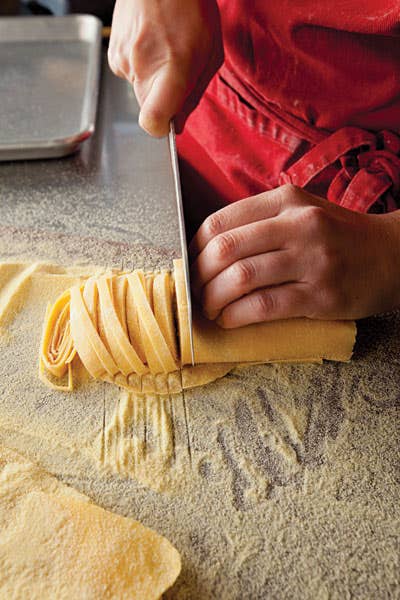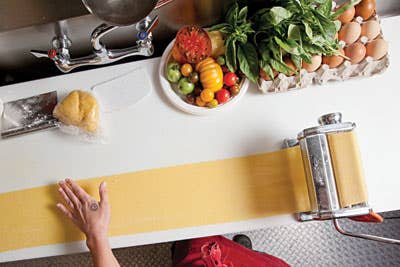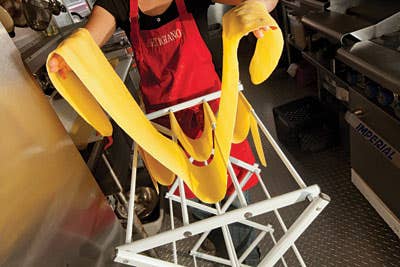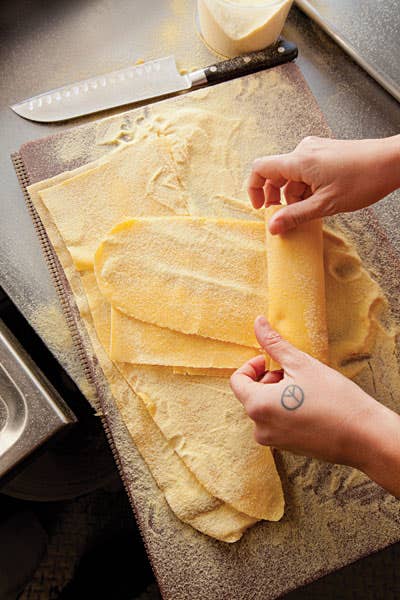
How To Make Foolproof Fettuccine
If our salute to the food carts of Portland, Oregon, taught us anything, it's that cooking in a scaled-back kitchen doesn't have to mean cutting corners. Rachael Grossman at the cart Artigiano wowed us with her method for making fresh fettuccine. Allowing the pasta to dry out before slicing it prevents sticking, makes for easy cutting, and yields noodles that retain their shape and bite during cooking. See the recipe for Fettuccine with Heirloom Tomatoes »





Keep Reading
Continue to Next Story










